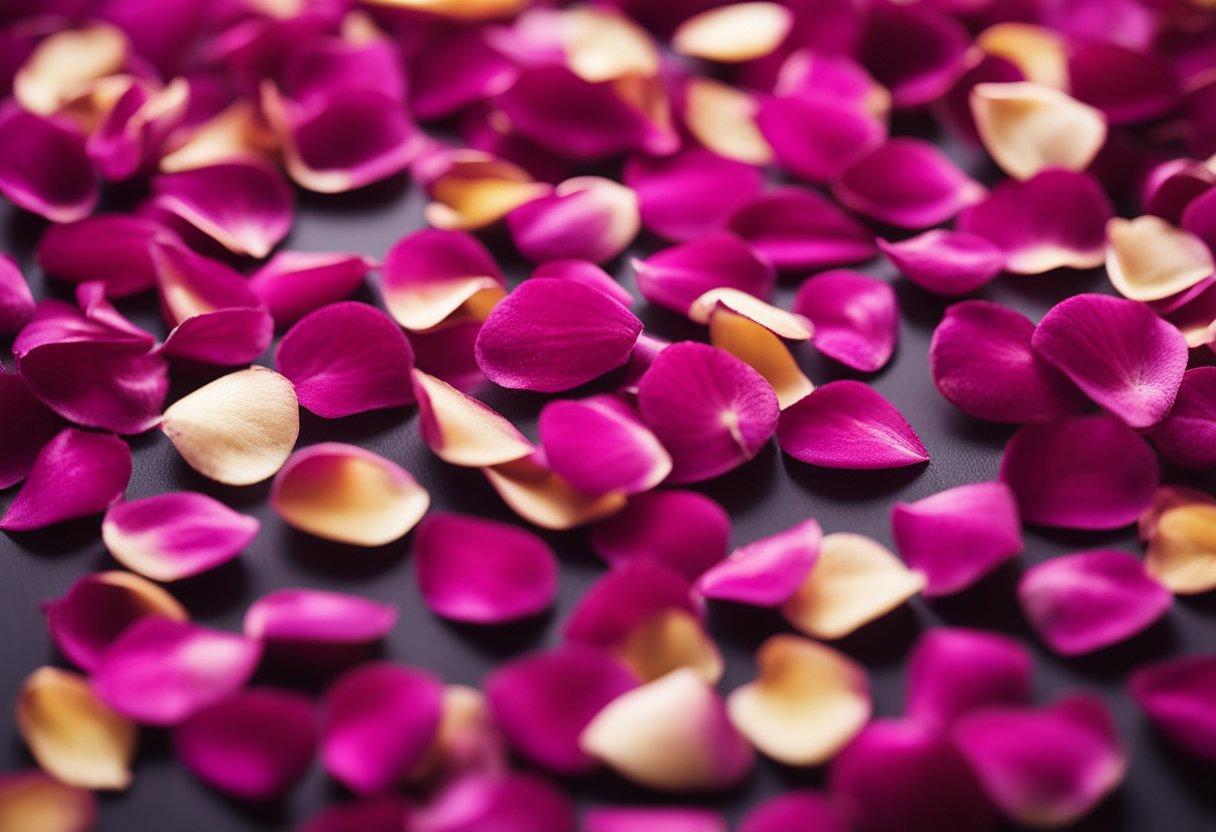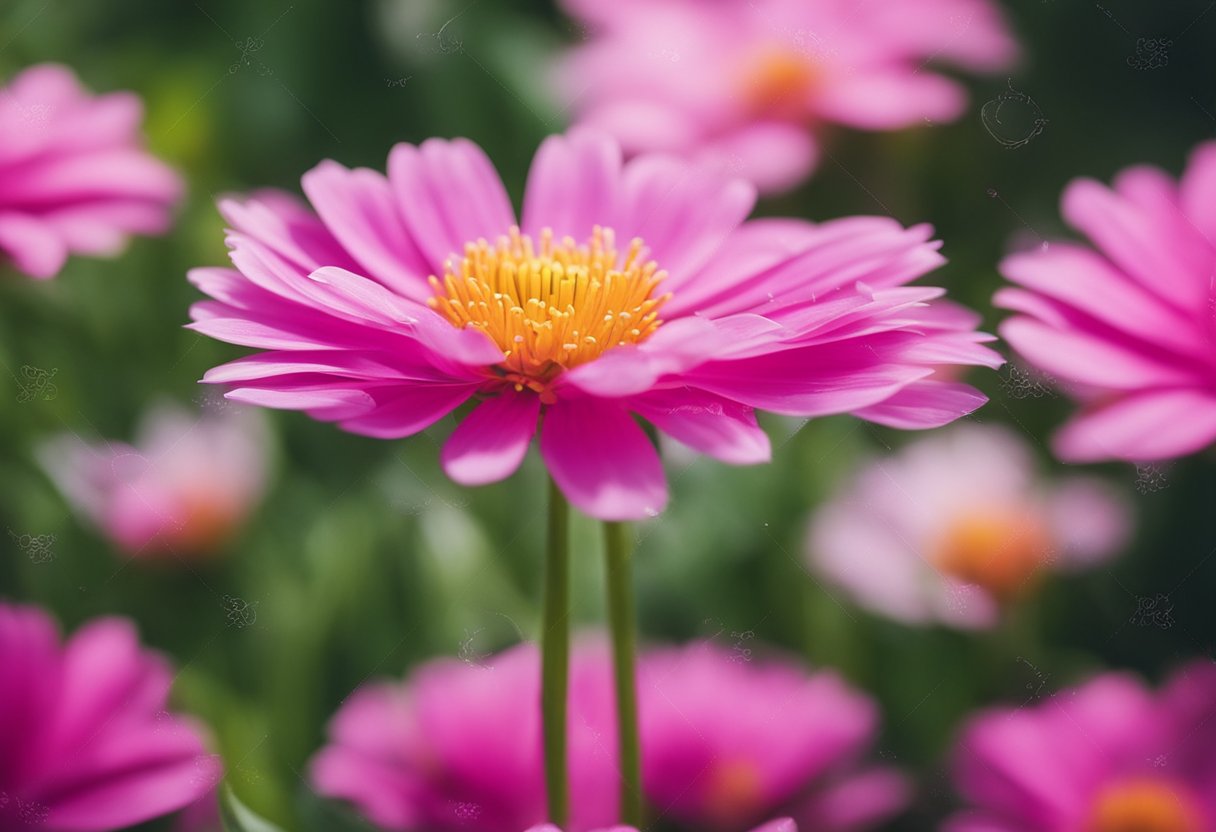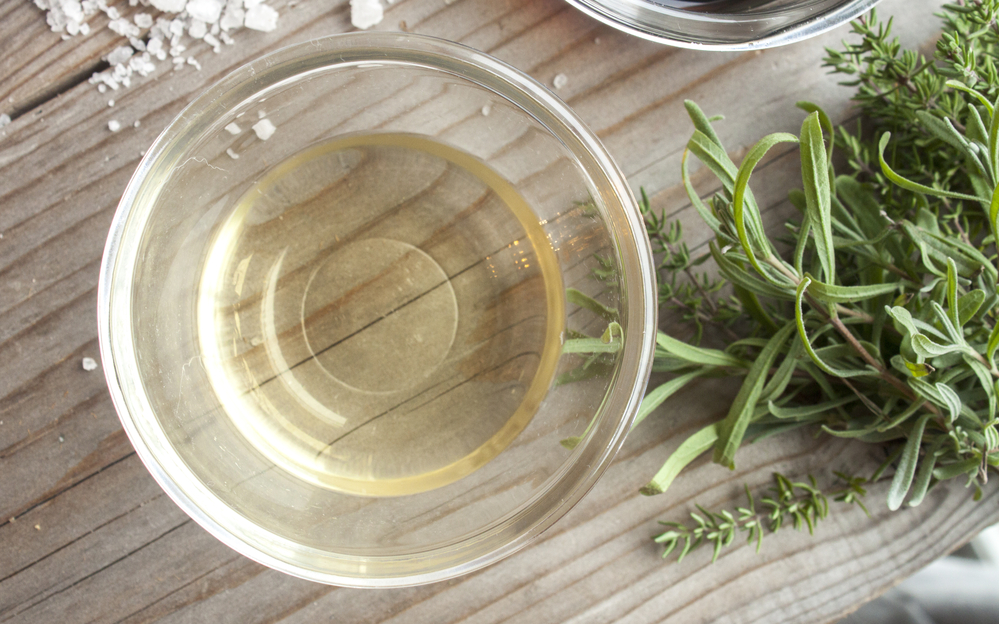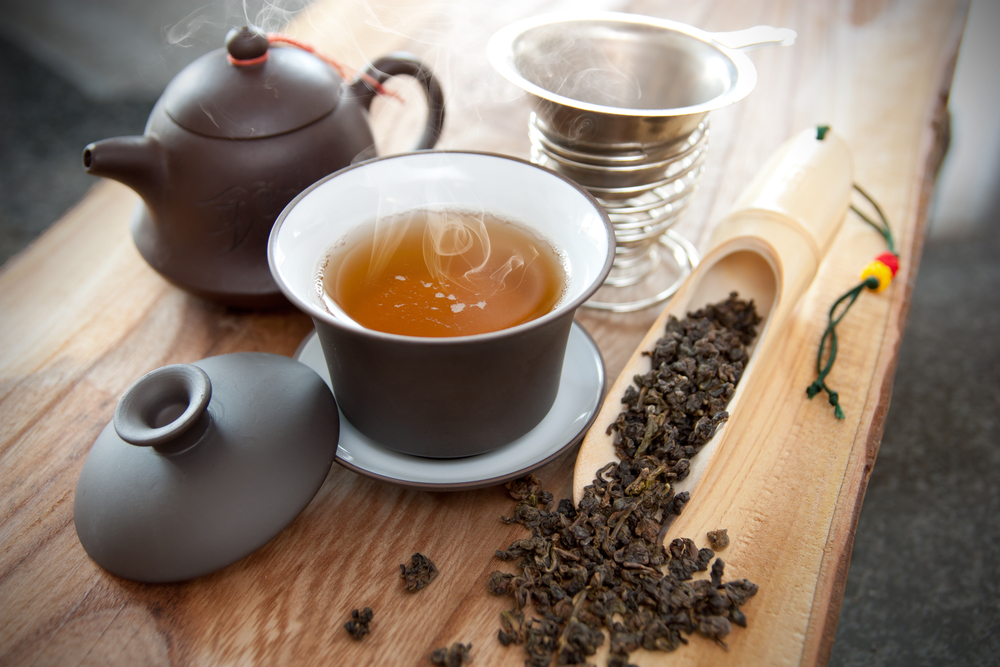When it comes to wine, there are many different types and flavors to choose from. One popular variety is rosé, which has become increasingly popular in recent years.
But what exactly does rosé taste like? In this article, I will explore the flavor profile of rosé, the different types of rosé available, and how to pair it with food.

Understanding the taste of rosé can be a bit tricky, as it can vary depending on the grape used and the region it is grown in.
However, in general, rosé has a light, fruity flavor with floral notes. It is typically served chilled and should be consumed within two years of the vintage date to enjoy its full flavor.
Some of the most common flavors found in rosé include red fruit like strawberries and raspberries, citrus, flowers, and melon.
Different types of rosé are available, each with their own unique flavor profile. For example, sparkling rosé has a fizzy texture and a slightly sweet taste, while dry rosé has a crisp, refreshing taste.
Rosé can also be made from a variety of grapes, including Pinot Noir, Grenache, and Syrah. By understanding the different types of rosé available, you can find the perfect one to suit your taste buds.
Key Takeaways
- Rosé has a light, fruity flavor with floral notes and is typically served chilled.
- Different types of rosé are available, including sparkling rosé and dry rosé, each with their own unique flavor profile.
- Rosé can be made from a variety of grapes, including Pinot Noir, Grenache, and Syrah.
Understanding Rosé
As a wine enthusiast, I have tasted a variety of wines, but there is something unique about rosé. Rosé is a pink wine that can range from pale pink to deep salmon-pink colors with a beautiful blush hue.
It is made from red grapes, but unlike red wine, the skins of the grapes are removed after a short period of maceration, resulting in the pink color.
Rosé wine can have a range of flavors, from sweet to dry, and can include notes of strawberry, raspberry, citrus, and melon.
The acidity of rosé wine can also vary, with some wines being more acidic than others. The primary flavors of rosé wine are red fruit, flowers, citrus, and melon, with a pleasant crunchy green flavor on the finish similar to celery or rhubarb.
There are different types of rosé wines, including still and effervescent (sparkling) rosé. The type of grape used to make the wine greatly varies the flavor.
Rosé may be prepared with nearly any red wine grape type, with the lighter color and flavor attained by specific fermenting procedures.
In terms of food pairing, rosé is a versatile wine that can complement a wide range of dishes. It pairs well with light meals such as salads, seafood, and grilled chicken.
It can also be enjoyed on its own as a refreshing drink during the summer months.
Overall, rosé wine is a unique and flavorful type of wine that is worth exploring for any wine lover.
Flavor Profile of Rosé

As a wine, Rosé has a unique flavor profile that distinguishes it from other wines.
Rosé wines are made from red grapes, but the skin of the grapes is only left in contact with the juice for a short period, which gives it its characteristic pink color.
Rosé wines can be dry, semi-sweet, or sweet, and the sweetness level can vary depending on the type of grape used and the region where it is grown.
The color of Rosé wines can range from pale pink to deep salmon-pink colors with a beautiful blush hue.
The primary flavors of Rosé wine are red fruit, flowers, citrus, and melon, with a pleasant crunchy green flavor on the finish similar to celery or rhubarb.
The exact taste of the wine, however, will depend on the grape that is used and the region in which it is grown.
Rosé wine is light and refreshing, making it perfect for summer months. It has a fruity flavor that is brighter and much more crisp than a red wine.
Sweet Rosé and dry Rosé will, of course, be sweeter or more dry.
In terms of sweetness, Rosé wine falls somewhere in between white wine and red wine. It has a balanced sweetness that is not too overpowering, making it a great wine to pair with a variety of foods.
Rosé wine also has floral notes that add to its delicate taste profile.
Overall, Rosé wine has a unique flavor profile that is light, fresh, and fruity.
It is a perfect wine for people who enjoy the taste of red wine but want something lighter and more refreshing.
Different Types of Rose
As with any wine, the taste of rosé can vary greatly depending on the type of grape used and the region it comes from.
Some common types of grapes used in making rosé include Grenache, Syrah, Pinot Noir, Cabernet Sauvignon, Zinfandel, Merlot, and Cinsault.
Dry rosé is a popular type of rosé wine, and it can range in flavor from light and crisp to fuller-bodied with more complex flavors.
This type of rosé is typically made from red grapes that are pressed and then left to ferment with the skins for a short period of time, giving the wine its characteristic pink color.
Sweet rosé, on the other hand, is made from grapes that are left to ferment for a longer period of time, resulting in a sweeter flavor.
This type of rosé is often enjoyed as a dessert wine or paired with spicy foods.
Rosé wine can also come in different styles, such as sparkling rosé and rosé champagne.
Sparkling rosé is made using the same method as sparkling wine, with a second fermentation in the bottle, while rosé champagne is made using the traditional method used to produce champagne.
When it comes to pairing rosé with food, it pairs well with a wide range of dishes.
Dry rosé pairs well with light, summery dishes such as salads and seafood, while sweeter rosé pairs well with spicy dishes and desserts.
Overall, the taste of rosé can vary greatly depending on the type of grape used, the region it comes from, and the style of wine.
Whether you prefer a dry or sweet rosé, there is sure to be a type of rosé that will suit your taste preferences.
Rose Production Process
As a wine lover and enthusiast, I have always been fascinated by the production process of different wines.
Rose wine, in particular, has a unique production process that sets it apart from other wines.
The production process of rose wine involves the use of black or red-skinned grapes like Syrah or Sangiovese.
The winemaker crushes the grapes and then allows the skins to stay immersed in the juice for a period ranging from two to twenty hours.
This process is known as maceration. The longer the maceration period, the darker the wine will be.
After the maceration period, the grapes are pressed, and the skins are discarded. This differs from red wine production, where the skins are fermented with the juice.
The discarded skins give the wine its distinct pink color.
The fermentation process for rose wine is similar to that of white wine. The winemaker adds yeast to the juice, which converts the sugar in the juice to alcohol.
The fermentation process is stopped when the winemaker achieves the desired alcohol content and sugar level.
The taste of rose wine can vary depending on the type of grape used, the region it comes from, and the production process.
Dry rose is currently the most popular style of rose wine around the world. It is produced almost exclusively in Europe, specifically in the well-known Provence area of France and in northern Spain.
The fruity undertones and citrus notes are more prominent in this type of rose wine.
In conclusion, the production process of rose wine involves the use of black or red-skinned grapes, maceration, pressing, and fermentation.
The taste of rose wine varies depending on factors such as grape type, region, and production process.
Pairing Rose with Food
When it comes to pairing rose with food, there are a few guidelines to keep in mind. Rose is a versatile wine that can pair well with a variety of dishes, but it’s important to consider the style and flavor profile of the wine when choosing a pairing.
For starters, rose is a great choice for summer drinking and pairs well with light, refreshing dishes like salads and seafood. Chilled rose is also a popular choice for cocktails and can be a great addition to a summer party or barbecue.
When it comes to specific flavors, rose often has notes of strawberries and melon, making it a great pairing for dishes that feature these ingredients.
For example, a strawberry salad or melon and prosciutto appetizer can be a great match for a chilled rose.
In terms of meats and cheeses, rose can pair well with lighter options like chicken and soft cheeses. However, it can also hold up to heartier dishes like lamb or beef if the wine has enough body and tannins.
Overall, rose is a versatile wine that can pair well with a variety of foods. When in doubt, opt for lighter dishes and ingredients that complement the wine’s refreshing flavor profile.
Rose in Other Industries

As a popular flower, roses are used in various industries such as cosmetics, perfumes, and pastries. Rose water is a by-product of the distillation of rose petals and is used in many Middle Eastern and Indian dishes.
It has a subtle floral flavor and aroma, which can enhance the taste of food. Rose water is also used as a natural fragrance in cosmetics and perfumes.
Cosmetics companies use rose water and oil in their products due to their hydrating and anti-inflammatory properties.
Rose oil is known for its ability to soothe and calm the skin, making it a popular ingredient in skincare products.
Rose water is also used as a toner to help balance the skin’s pH levels.
Perfumes have been using rose as a key ingredient for centuries. The scent of roses is often associated with romance and femininity, making it a popular choice for perfumes.
Rose oil is one of the most expensive essential oils, and it takes around 60,000 roses to produce just one ounce of oil.
Dried rose petals are used in many culinary dishes, including pastries and teas. They add a subtle floral flavor and aroma to the food, making it more appealing to the senses.
Rose petals are also used as a natural decoration for cakes and other desserts.
In conclusion, roses are not only beautiful flowers but also have many practical uses in other industries. From rose water in Middle Eastern cuisine to rose oil in perfumes, the versatility of roses is impressive.
Characteristics of Rosé
As a wine, rosé is known for its versatility and refreshing taste. It is a light-bodied wine that is perfect for warm weather, picnics, and outdoor events.
Rosé wine can be made from a variety of grapes, including Pinot Noir, Syrah, Grenache, and Sangiovese.
Aroma
Rosé wine has a floral and fruity aroma that is often described as delicate and refreshing. The aroma can vary depending on the grape used to make the wine.
For example, a rosé made from Grenache grapes may have a fruity aroma with hints of strawberry and watermelon.
Skin
Rosé wine gets its pink color from the skin of the grapes. The longer the grape skins are left in contact with the juice, the deeper the color of the wine will be.
However, unlike red wine, the skins are removed before fermentation is complete, resulting in a lighter color and a less tannic flavor.
Body
Rosé wine is generally light-bodied, meaning it has a lower alcohol content and a thinner texture than red wine. However, some rosé wines can be full-bodied, with a higher alcohol content and a richer texture.
Acidity
Rosé wine is known for its high acidity, which gives it a crisp and refreshing taste. The acidity can vary depending on the grape used to make the wine, as well as the region where it was grown.
Bubbles
Rosé wine can be either still or sparkling. Sparkling rosé wines are made using the same method as Champagne, with a secondary fermentation in the bottle.
This process creates bubbles and a slightly effervescent texture.
Colors
Rosé wine can range in color from pale pink to deep ruby. The color of the wine is determined by the amount of time the grape skins are left in contact with the juice, as well as the grape variety.
Balance
A good rosé wine should have a balance of fruitiness, acidity, and sweetness. The acidity should be high enough to give the wine a crisp and refreshing taste, while the fruitiness should be balanced with a hint of sweetness.
Overall, rosé wine is a versatile and refreshing wine that can be enjoyed on its own or paired with a variety of foods.
Its light body and high acidity make it a perfect wine for warm weather and outdoor events.
Health Benefits of Rose

As a herbal tea, rose tea has a fragrant and pleasant taste. It is believed to have several health benefits, including:
- Antioxidant Properties: Rose tea contains antioxidants that help protect the body against damage caused by free radicals. These antioxidants help reduce the risk of chronic diseases, such as cancer, heart disease, and diabetes.
- Anti-inflammatory Effects: The anti-inflammatory properties of rose tea can help reduce inflammation in the body. This can help alleviate symptoms of conditions such as arthritis, asthma, and inflammatory bowel disease.
- Immune System Boost: Rose tea contains vitamin C, which is essential for a healthy immune system. Drinking rose tea regularly can help boost your immune system and reduce the risk of infections.
- Stress Relief: Rose tea is believed to have a calming effect on the body, which can help reduce stress and anxiety. It is also believed to help improve mood and promote relaxation.
- Digestive Health: Rose tea is believed to help improve digestion and alleviate digestive problems such as constipation, bloating, and stomach cramps.
Overall, rose tea is a delicious and healthy beverage that can provide several health benefits.
It is important to note that while rose tea is generally considered safe, it is always a good idea to consult with a healthcare professional before adding any new herbal tea to your diet.
Frequently Asked Questions
What are the different types of rosé wines?
There are several types of rosé wines, including still, sparkling, and fortified. Still rosé wines are the most common and are made by fermenting the juice of red grapes for a short period of time.
Sparkling rosé wines are made using the traditional method, where the wine undergoes a secondary fermentation in the bottle.
Fortified rosé wines are made by adding a distilled spirit, such as brandy, to the wine.
What is the alcohol content of rosé wine?
The alcohol content of rosé wine can vary, but it typically falls between 11% and 14%.
The alcohol content is influenced by several factors, including the grape variety, the climate, and the winemaking process.
Is rosé wine typically sweet or dry?
Rosé wine can be sweet or dry, depending on the winemaking process. Dry rosé wines are made by fermenting the juice of red grapes until all of the sugar has been converted into alcohol.
Sweet rosé wines are made by stopping the fermentation process before all of the sugar has been converted into alcohol.
What grapes are used to make rosé wine?
Rosé wine can be made from a variety of red grapes, including Grenache, Syrah, Mourvèdre, Sangiovese, and Pinot Noir.
The grape variety used to make rosé wine can influence the color, flavor, and aroma of the wine.
Does rosé wine have a distinct taste compared to white wine?
Yes, rosé wine has a distinct taste compared to white wine. Rosé wine is made using red grapes, which gives it a slightly different flavor profile.
Rosé wine is typically lighter and fruitier than red wine, but it has more body and complexity than white wine.
Are there any notable differences in taste between rosé and champagne?
Yes, there are notable differences in taste between rosé and champagne. Rosé wine is typically lighter and fruitier than champagne, which is made using a blend of white and red grapes.
Champagne also has a higher level of acidity and a more complex flavor profile than rosé wine







